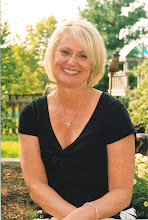Originally posted August 14, 2008
By Holly Watt
Special to The Washington Post
Thursday, August 14, 2008; A02
A growing number of teenagers say it's easier to illegally obtain prescription drugs than to buy beer, according to a survey published today.
The National Center on Addiction and Substance Abuse at Columbia University asked: "Which is easiest for someone your age to buy: cigarettes, beer, marijuana, or prescription drugs such as OxyContin, Percocet, Vicodin or Ritalin, without a prescription?" Nineteen percent of teenagers found it easier to purchase prescription drugs than cigarettes, beer or marijuana, compared with 13 percent a year ago. A quarter of the teens said it is easiest to buy marijuana, with 43 percent of 17-year-olds saying they could buy the drug in less than an hour.
The study also found that a large group of parents do not know where their children are in the evening and identified a group of "problem parents" whose actions increased the abuse of illegal and prescription drugs among 12-to-17-year-olds.
Joseph Califano, chairman and president of the center, said there are basic steps parents could take to avoid being "passive pushers." The statistics showed that 34 percent of teenagers abusing prescription drugs, like OxyContin and Vicodin, obtained them at home or from their parents. "Fifty years ago, people would lock up the liquor," he said in a telephone interview. "Maybe there should be a lock on the medicine cabinet now."
Elizabeth Planet, the center's director of special projects, who coordinated the study of 1,002 12-to-17-year-olds from April to June, highlighted the difference in behavior reported by parents and their children. "Half of the teenagers were saying they were out on school nights, but only 14 percent of the parents knew that they were out," she said. "There are lots of factors at play here. Parents are not paying attention. There are parents who are out in the evening themselves. There are parents out at work."
The correlation between allowing teens out late on school nights and the likelihood that people in their presence would be smoking and drinking was dramatic. Half of all teenagers allowed out after 10 p.m. said that they spent time with people smoking and using drugs, while 29 percent of those who returned home between 8 p.m. and 10 p.m. reported the same behavior.
Califano recommended family dinners as a simple way of decreasing the chances of drug abuse, noting that 23 percent of teens who ate fewer than three dinners a week with their family had used marijuana, compared with 10 percent when the family ate together five or more times a week.
Stephen Pasierb, the president of Partnership for a Drug-Free America, cited a lack of understanding between the generations, with parents not understanding the risks surrounding prescription drugs, in particular. "This is a very different generation of children," he said. "Prescription drugs are entrenched, and they have not moved for five years, and this generation of parents simply do not understand the problem."
Nora Volkow, the director of the National Institute on Drug Abuse, said that drug abuse has declined over the last six years, but the abuse of prescription medicine is a serious concern.
"Kids think that because these are medicines that are prescribed, they are safe," she said. "The problem is that there is very little difference between the amount they take for a high and the amount that causes an overdose."
Saturday, August 30, 2008
Subscribe to:
Post Comments (Atom)

No comments:
Post a Comment